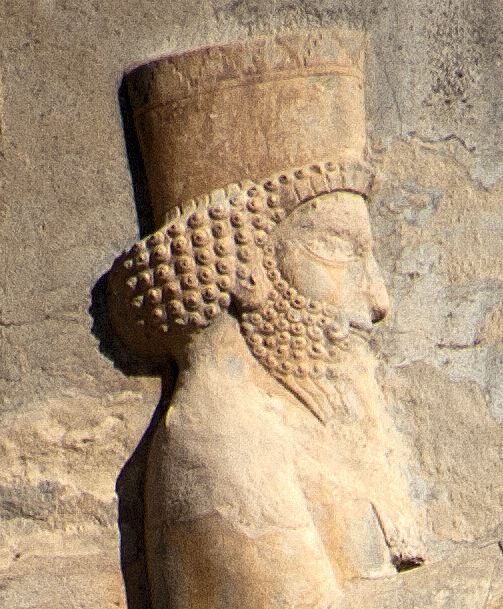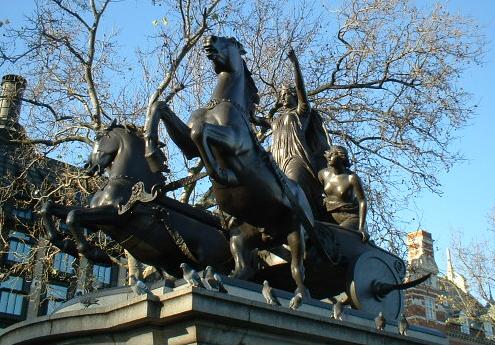|
Battle Of Cunaxa
The Battle of Cunaxa was fought in the late summer of 401 BC between the Persian king Artaxerxes II and his brother Cyrus the Younger for control of the Achaemenid throne. The great battle of the revolt of Cyrus took place 70 km north of Babylon, at Cunaxa ( el, Κούναξα), on the left bank of the Euphrates. The main source is Xenophon, a Greek soldier who participated in the fighting. Preparations Cyrus gathered an army of Greek mercenaries, consisting of 10,400 hoplites and 2,500 light infantry and peltasts, under the Spartan general Clearchus, and met Artaxerxes at Cunaxa. He also had a large force of levied troops under his second-in-command Ariaeus. The strength of the Achaemenid army was 40,000 men. When Cyrus learned that his elder brother, the Great King, was approaching with his army, he drew up his army in battle array. He placed the Greek mercenaries on the right, near the river. In addition to this they were supported on their right by some cavalry, 1,0 ... [...More Info...] [...Related Items...] OR: [Wikipedia] [Google] [Baidu] |
Ten Thousand
The Ten Thousand ( grc, οἱ Μύριοι, ''oi Myrioi'') were a force of mercenary units, mainly Greeks, employed by Cyrus the Younger to attempt to wrest the throne of the Persian Empire from his brother, Artaxerxes II. Their march to the Battle of Cunaxa and back to Greece (401–399 BC) was recorded by Xenophon, one of their leaders, in his work '' Anabasis''. Campaign Between 401 and 399 BC, the Ten Thousand marched across Anatolia, fought the Battle of Cunaxa, and then marched back to Greece. Xenophon stated in '' Anabasis'' that the Greek heavy troops routed their opposition twice at Cunaxa at the cost of only one Greek soldier wounded. Only after the battle did they hear that Cyrus had been killed, making their victory irrelevant and the expedition a failure. The Ten Thousand found themselves far from home with no food, no employer, and no reliable allies. They offered to make their Persian ally Ariaeus king, but he refused on the grounds that he was not of royal bl ... [...More Info...] [...Related Items...] OR: [Wikipedia] [Google] [Baidu] |
Scythed Chariot
The scythed chariot was a war chariot with scythe blades mounted on each side. It was employed in ancient times. History The scythed chariot was a modified war chariot. The blades extended horizontally for about to each side of the wheels. The Greek general Xenophon (430−354 BC), an eyewitness at the battle of Cunaxa, tells of them: "These had thin scythes extending at an angle from the axles and also under the driver's seat, turned toward the ground". Serrated bronze blades for chariot wheels have also been excavated from Zhou-era pre-imperial Chinese sites. Dismissing completely 17th to 19th century ideas of a Canaanite, Assyrian, Indian or Macedonian origin, Historian Alexander K. Nefiodkin challenges Xenophon's attribution of scythed chariots to the first Persian king Cyrus, pointing to their notable absence in the invasion of Greece (480−479 BC) by one of his successors, Xerxes I. Instead, he argues that the Persians introduced scythed chariots sometime later durin ... [...More Info...] [...Related Items...] OR: [Wikipedia] [Google] [Baidu] |
Ten Thousand (Greek)
The Ten Thousand ( grc, οἱ Μύριοι, ''oi Myrioi'') were a force of mercenary units, mainly Greeks, employed by Cyrus the Younger to attempt to wrest the throne of the Persian Empire from his brother, Artaxerxes II. Their march to the Battle of Cunaxa and back to Greece (401–399 BC) was recorded by Xenophon, one of their leaders, in his work ''Anabasis''. Campaign Between 401 and 399 BC, the Ten Thousand marched across Anatolia, fought the Battle of Cunaxa, and then marched back to Greece. Xenophon stated in ''Anabasis'' that the Greek heavy troops routed their opposition twice at Cunaxa at the cost of only one Greek soldier wounded. Only after the battle did they hear that Cyrus had been killed, making their victory irrelevant and the expedition a failure. The Ten Thousand found themselves far from home with no food, no employer, and no reliable allies. They offered to make their Persian ally Ariaeus king, but he refused on the grounds that he was not of royal bl ... [...More Info...] [...Related Items...] OR: [Wikipedia] [Google] [Baidu] |
Armenia
Armenia (), , group=pron officially the Republic of Armenia,, is a landlocked country in the Armenian Highlands of Western Asia.The UNbr>classification of world regions places Armenia in Western Asia; the CIA World Factbook , , and ''Oxford Reference Online'' also place Armenia in Asia. It is a part of the Caucasus region; and is bordered by Turkey to the west, Georgia to the north, the Lachin corridor (under a Russian peacekeeping force) and Azerbaijan to the east, and Iran and the Azerbaijani exclave of Nakhchivan to the south. Yerevan is the capital, largest city and the financial center. Armenia is a unitary, multi-party, democratic nation-state with an ancient cultural heritage. The first Armenian state of Urartu was established in 860 BC, and by the 6th century BC it was replaced by the Satrapy of Armenia. The Kingdom of Armenia reached its height under Tigranes the Great in the 1st century BC and in the year 301 became the first state in the world to a ... [...More Info...] [...Related Items...] OR: [Wikipedia] [Google] [Baidu] |
Corduene
Corduene hy, Կորճայք, translit=Korchayk; ; romanized: ''Kartigini'') was an ancient historical region, located south of Lake Van, present-day eastern Turkey. Many believe that the Kardouchoi—mentioned in Xenophon’s Anabasis as having given his 10,000 troops a mauling as they retreated from Persia in 401 BCE—were the ancestors of the Kurds. According to the ''1911 Encyclopædia Britannica'', Gordyene is the ancient name of the region of '' Bohtan'' (now Şırnak Province). It is mentioned as ''Beth Qardu'' in Syriac sources and is described as a small vassal state between Armenia and Parthian Empire in the mountainous area south of Lake Van in modern Turkey Corduene must also be sought on the left bank of the Tigris. Corduene is documented as a fertile mountainous district, rich in pasturage. The Kingdom of Gordyene emerged from the declining Seleucid Empire and for most of its history, it was a province of the Roman Empire and acknowledged the sovereignty of Ro ... [...More Info...] [...Related Items...] OR: [Wikipedia] [Google] [Baidu] |
Tissaphernes Portrait
Tissaphernes ( peo, *Ciçafarnāʰ; grc-gre, Τισσαφέρνης; xlc, 𐊋𐊆𐊈𐊈𐊀𐊓𐊕𐊑𐊏𐊀 , ; 445395 BC) was a Persian soldier and statesman, Satrap of Lydia and Ionia. His life is mostly known from the works of Thucydides and Xenophon. According to Ctesias, he was the son of Hidarnes III and therefore the great grandson of Hydarnes, one of the six conspirators who had supported the rise of Darius the Great. Etymology ''Čiçafarnah'' (''čiça'' + ''farnah'') "with shining splendor": ''čiça'' is from the Proto-Indo-European adjective ''(s)koitrós'' 'bright'; ''farnah'' is equivalent to Avestan '' xvarənah'' 'fortune', 'glory', which appears as 'luminous'. ''čiθra'' means nature, specifically the animate nature. ''Čiça-'' is the Old Persian form of the Old Iranian term ''Čiθra-'', which is reflected in the Median form of the name, ''*Čiθrafarnah-'' ( grc, Τετραφέρνης). Family and early life Tissaphernes was born in ... [...More Info...] [...Related Items...] OR: [Wikipedia] [Google] [Baidu] |
Scaphism
Scaphism (from Greek , meaning "boat"), also known as the boats, is an alleged ancient Persian method of execution mentioned by Plutarch in his ''Life of Artaxerxes''. It ostensibly entailed trapping the victim between two boats, feeding and covering them with milk and honey, and allowing them to fester and be devoured by insects and other vermin over time. Historical descriptions The first mention of scaphism is Plutarch's description of the execution of the soldier Mithridates, given as punishment by king Artaxerxes II for killing his brother Cyrus the Younger, who had rebelled in an attempt to claim the throne of the Achaemenid Empire: The 12th-century Byzantine chronicler Joannes Zonaras later described the punishment, based on Plutarch: In fiction * In Shakespeare's ''The Winter's Tale'', the rogue Autolycus falsely tells the shepherd and his son that because Perdita has fallen in love with the prince, her adoptive father will be stoned, while her adoptive brother will ... [...More Info...] [...Related Items...] OR: [Wikipedia] [Google] [Baidu] |
Javelin
A javelin is a light spear designed primarily to be thrown, historically as a ranged weapon, but today predominantly for sport. The javelin is almost always thrown by hand, unlike the sling, bow, and crossbow, which launch projectiles with the aid of a hand-held mechanism. However, devices do exist to assist the javelin thrower in achieving greater distance, such as spear-throwers or the amentum. A warrior or soldier armed primarily with one or more javelins is a javelineer. The word javelin comes from Middle English and it derives from Old French ''javelin'', a diminutive of ''javelot'', which meant spear. The word ''javelot'' probably originated from one of the Celtic languages. Prehistory There is archaeological evidence that javelins and throwing sticks were already in use by the last phase of the Lower Paleolithic. Seven spear-like objects were found in a coal mine in the city of Schöningen, Germany. Stratigraphic dating indicates that the weapons are about 400,000 ye ... [...More Info...] [...Related Items...] OR: [Wikipedia] [Google] [Baidu] |
Persepolis
, native_name_lang = , alternate_name = , image = Gate of All Nations, Persepolis.jpg , image_size = , alt = , caption = Ruins of the Gate of All Nations, Persepolis. , map = , map_type = Iran#West Asia , map_alt = , map_caption = , map_size = , altitude_m = , altitude_ref = , relief = yes , coordinates = , map_dot_label = , location = Marvdasht, Fars Province, Iran , region = , type = Settlement , part_of = , length = , width = , area = , volume = , diameter = , circumference = , height = , builder = , and , material = Limestone, mud-brick, cedar wood , built = 6th century BC , abandoned = , epochs = Achaemenid Empire , cultures = Persian , dependency_of = , occupants = , event = *Battle of th ... [...More Info...] [...Related Items...] OR: [Wikipedia] [Google] [Baidu] |
Artaxerxes II Relief Portrait Detail
Artaxerxes may refer to: The throne name of several Achaemenid rulers of the 1st Persian Empire: * Artaxerxes I of Persia (died 425 BC), Artaxerxes I Longimanus, ''r.'' 466–425 BC, son and successor of Xerxes I * Artaxerxes II of Persia (436 BC–358 BC), Artaxerxes II Mnemon, ''r.'' 404–358 BC, son and successor of Darius II * Artaxerxes III of Persia (425 BC–338 BC), Artaxerxes III Ochus, ''r.'' 358–338 BC, son and successor of Artaxerxes II * Artaxerxes IV of Persia (died 336 BC), Artaxerxes IV Arses, ''r.'' 338–336 BC, son and successor of Artaxerxes III * Artaxerxes V of Persia (died 329 BC), Artaxerxes V Bessus, ''r.'' 330–329 BC, nobleman who seized the throne from Darius III Artaxerxes may also refer to: * Ardeshir (other), the Middle and Modern Persian name descended from Old Persian equivalent of Artaxerxes, ''Artaxšacā'' * ''Artaxerxes'' (opera), a 1762 opera by Thomas Arne * 7212 Artaxerxes, a main-belt asteroid * The wizard Artaxerxes, a ch ... [...More Info...] [...Related Items...] OR: [Wikipedia] [Google] [Baidu] |
Sparta
Sparta ( Doric Greek: Σπάρτα, ''Spártā''; Attic Greek: Σπάρτη, ''Spártē'') was a prominent city-state in Laconia, in ancient Greece. In antiquity, the city-state was known as Lacedaemon (, ), while the name Sparta referred to its main settlement on the banks of the Eurotas River in Laconia, in south-eastern Peloponnese. Around 650 BC, it rose to become the dominant military land-power in ancient Greece. Given its military pre-eminence, Sparta was recognized as the leading force of the unified Greek military during the Greco-Persian Wars, in rivalry with the rising naval power of Athens. Sparta was the principal enemy of Athens during the Peloponnesian War (431–404 BC), from which it emerged victorious after the Battle of Aegospotami. The decisive Battle of Leuctra in 371 BC ended the Spartan hegemony, although the city-state maintained its political independence until its forced integration into the Achaean League in 192 BC. The city nevertheles ... [...More Info...] [...Related Items...] OR: [Wikipedia] [Google] [Baidu] |
Peltasts
A ''peltast'' ( grc-gre, πελταστής ) was a type of light infantryman, originating in Thrace and Paeonia, and named after the kind of shield he carried. Thucydides mentions the Thracian peltasts, while Xenophon in the Anabasis distinguishes the Thracian and Greek peltast troops. The peltast often served as a skirmisher in Hellenic and Hellenistic armies. In the Medieval period, the same term was used for a type of Byzantine infantryman. Description ''Pelte'' shield ''Peltasts'' carried a crescent-shaped wicker shield called a "''pelte''" (Ancient Greek grc, πέλτη, peltē, label=none; Latin: ) as their main protection, hence their name. According to Aristotle, the ''pelte'' was rimless and covered in goat- or sheepskin. Some literary sources imply that the shield could be round, but in art it is usually shown as crescent-shaped. It also appears in Scythian art and may have been a common type in Central Europe. The shield could be carried with a central stra ... [...More Info...] [...Related Items...] OR: [Wikipedia] [Google] [Baidu] |







